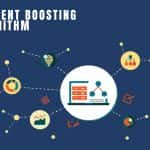In today’s data-driven world, information is power. But raw data itself isn’t enough. Businesses need a way to unlock the insights hidden within, and that’s where data science comes in. This blog post serves as a cheat sheet for business leaders, providing a high-level understanding of data science, its applications, and how to leverage it for success.
What is Data Science for Business Leaders?
Imagine a gold mine overflowing with raw ore. Data science is the process of extracting the valuable minerals – the insights – that can transform your business. It’s a blend of statistics, computer science, and domain knowledge used to extract knowledge and create solutions from data.
Data science for business leaders isn’t about becoming a coding pro. It’s about understanding the potential of data and asking the right questions:
- How can we improve customer satisfaction?
- Can we predict which customers are at risk of churning?
- What marketing channels are most effective?
By harnessing the power of data science, businesses can make data-driven decisions that lead to:
- Increased Revenue: Identify new sales opportunities and optimize pricing strategies.
- Improved Efficiency: Streamline operations and reduce costs.
- Enhanced Customer Experience: Personalize marketing and deliver targeted recommendations.
- Reduced Risk: Predict and mitigate potential problems.
Data Science Cheat Sheet for Business Leaders
Data science has become an integral part of modern business strategy, providing insights that drive decision-making and enhance competitiveness. For business leaders who may not be data experts themselves, having a basic understanding of key data science concepts can be invaluable. This cheat sheet aims to provide a concise overview of essential data science concepts tailored for business leaders.
1. The Three Types of Data Science
Data science isn’t a one-size-fits-all solution. There are three main types, each serving a distinct purpose:
- Descriptive Analytics (Business Intelligence): This focuses on understanding what happened. Think of it as summarizing past data to answer questions like “Which products are selling best?” or “What are our customer demographics?”
- Predictive Analytics (Machine Learning): This uses historical data to predict future outcomes. For example, it can identify customers likely to churn or forecast future sales trends.
- Prescriptive Analytics (Decision Science): This goes beyond prediction, using data to recommend specific actions. It can help businesses optimize pricing, personalize marketing campaigns, or develop targeted interventions to retain customers.
2. Building Your Data Science Team
Data science talent is in high demand. But you don’t necessarily need to hire a team of PhDs. Here are some options to consider:
- Hire Data Scientists: This is ideal for complex projects requiring expertise in specific areas.
- Upskill Existing Employees: Train employees with analytical skills in data science fundamentals.
- Outsource Data Science Projects: Partner with data science consultancies for specific projects.
3. The Data Science Workflow
Data science isn’t magic. It follows a well-defined process
- Data Collection: Gather data from various sources like sales records, customer surveys, and social media.
- Data Cleaning and Preprocessing: Ensure data accuracy and consistency before analysis.
- Exploration and Visualization: Analyze data trends and patterns through charts, graphs, and dashboards.
- Modeling and Experimentation (Predictive Analytics): Build, test, and refine statistical or machine learning models to make predictions.
- Communication and Deployment: Present insights to stakeholders and deploy models for real-world applications.
4. Understanding Data
- Structured Data: Organized data with a clear format, often found in databases or spreadsheets.
- Unstructured Data: Data without a predefined structure, like text documents, social media posts, or images.
- Big Data: Large volumes of data that cannot be easily managed or analyzed with traditional methods.
- Data Cleaning: Process of identifying and correcting errors or inconsistencies in datasets.
- Data Warehousing: Centralized repository for storing and managing data from various sources.
5. Key Concepts
- Descriptive Analytics: Examining past data to understand what happened.
- Predictive Analytics: Forecasting future outcomes based on historical data and statistical algorithms.
- Prescriptive Analytics: Recommending actions to achieve desired outcomes based on predictive models.
- Machine Learning: Subset of AI that enables systems to learn from data without being explicitly programmed.
- Supervised Learning: Learning from labeled data to make predictions or decisions.
- Unsupervised Learning: Finding patterns or insights from unlabeled data.
- Deep Learning: Neural networks with multiple layers used for complex pattern recognition tasks.
6. Tools and Technologies
- Python/R: Popular programming languages for data analysis and machine learning.
- SQL (Structured Query Language): Language for managing and querying relational databases.
- Tableau/Power BI: Visualization tools for creating interactive and informative data visualizations.
- Hadoop/Spark: Frameworks for distributed storage and processing of big data.
- Cloud Platforms (AWS, Azure, Google Cloud): Infrastructure for scalable and cost-effective data storage and analysis.
7. Data Ethics and Privacy
- GDPR (General Data Protection Regulation): European Union regulation on data protection and privacy.
- Data Anonymization: Removing personally identifiable information from datasets to protect privacy.
- Data Security: Measures to protect data from unauthorized access, use, or destruction.
- Ethical Use of Data: Ensuring data is used in a responsible and transparent manner, respecting individuals’ rights and privacy.
8. Business Applications
- Customer Segmentation: Dividing customers into groups based on characteristics or behavior.
- Churn Prediction: Forecasting which customers are likely to leave a service or product.
- Demand Forecasting: Predicting future demand for products or services to optimize inventory and resources.
- Sentiment Analysis: Analyzing text data to understand customer opinions and attitudes.
- Fraud Detection: Identifying fraudulent activities or transactions to minimize losses.
Conclusion
Data science is no longer just for tech giants. It’s a powerful tool that can transform any business. By understanding the fundamentals, building a data-driven culture, and embracing new technologies, business leaders can unlock the hidden potential of their data and drive success in the age of information.
Ready to take the next step? Explore online resources, attend data science workshops, or consult with data science professionals. Remember, the journey to becoming a data-driven organization starts with a single step. Take yours today!
Frequently Asked Questions
How Can I Be a Good Data Science Leader?
Leadership in the age of data science requires a shift in mindset. Here are some key qualities of a good data science leader:
- Embrace a Data-Driven Culture: Encourage data-based decision-making across the organization.
- Ask the Right Questions: Curiosity is key! Identify business challenges data science can address.
- Infrastructure: Secure the necessary tools and resources to manage and analyze data.
- Champion Data Literacy: Train employees to understand and interpret data effectively.
- Foster Collaboration: Break down silos and encourage communication between data scientists and business teams.
How to Use ChatGPT in Data Science
While ChatGPT is a large language model with capabilities in text generation and translation, it’s not specifically designed for data science tasks. However, it can be a helpful tool for:
- Data Summarization: Use ChatGPT to summarize large datasets and identify key trends.
- Brainstorming Ideas: Generate potential research questions or hypotheses based on your data.
- Data Storytelling: Craft compelling narratives around data insights for presentations or reports.
- Important Note: Always verify the accuracy of information generated by ChatGPT before using it in your data science projects.
How Do I Prepare My Business for Data Science?
- Assess Your Data Landscape: Evaluate the data you currently collect, its quality, and accessibility. Identify any gaps that need to be filled.
- Develop a Data Governance Strategy: Establish clear guidelines for data ownership, access, and security to ensure responsible data use.
- Invest in Data Tools and Technologies: There are numerous data visualization, analysis, and machine learning tools available. Consider your specific needs and budget when selecting them.
- Build Your Data Science Team (or Partner): Determine the best approach to acquire data science expertise, whether through in-house hiring, upskilling, or outsourcing.
Beyond the Basics: Advanced Applications of Data Science
Data science goes beyond basic analytics. Here are some cutting-edge applications that can give your business a competitive edge:
- Natural Language Processing (NLP): Extract insights from text data like customer reviews, social media conversations, and documents. Use it for sentiment analysis, topic modeling, and building chatbots.
- Computer Vision: Analyze visual data like images and videos to automate tasks, identify objects and patterns, and improve product development.
- Deep Learning: A subfield of machine learning inspired by the structure and function of the brain. It’s used for complex tasks like image recognition, fraud detection, and personalized recommendations.
Data science is a rapidly evolving field. Here are some trends to watch:
- Democratization of Data Science: With user-friendly tools and cloud-based platforms, data science will become more accessible to businesses of all sizes.
- Explainable AI (XAI): As AI models become more complex, there’s a growing need for interpretability. XAI techniques will help us understand how models arrive at their decisions.
- Ethical Considerations: Data privacy, bias, and fairness are critical issues in data science. Businesses need to ensure responsible data practices and build trust with customers.







